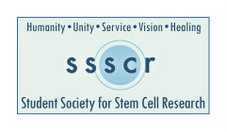| | 8. | Sprouty1 Regulates Reversible Quiescence of a Self-Renewing Adult Muscle Stem Cell Pool during Regeneration
Pages 117-129
Kelly L. Shea, Wanyi Xiang, Vincent S. LaPorta, Jonathan D. Licht, Charles Keller, M. Albert Basson, Andrew S. Brack
Graphical Abstract
► Pax7+ skeletal satellite cells regenerate muscle in their endogenous environment ► Quiescent satellite cells express the RTK inhibitor Spry1 ► Spry1 is needed for satellite cells to return to quiescence after muscle injury ► Deletion of Spry1 in satellite cells depletes the muscle stem cell pool
| | | | 9. | Key Roles for Transforming Growth Factor β in Melanocyte Stem Cell Maintenance
Pages 130-140
Emi K. Nishimura, Misa Suzuki, Vivien Igras, Jinyan Du, Scott Lonning, Yoshiki Miyachi, Jürgen Roes, Friedrich Beermann, David E. Fisher
Graphical Abstract► TGF-β signaling active as melanocyte stem cells enter quiescence ► TGF-β from niche induces cell cycle arrest and suppresses melanogenic genes ► Deletion of TGF-β receptor depletes melanocyte stem cells ► Hair grays prematurely in mice lacking melanocyte TFG-β receptor
| | | | 12. | The Nuclear Receptor Nr5a2 Can Replace Oct4 in the Reprogramming of Murine Somatic Cells to Pluripotent Cells
Pages 167-174
Jian-Chien Dominic Heng, Bo Feng, Jianyong Han, Jianming Jiang, Petra Kraus, Jia-Hui Ng, Yuriy L. Orlov, Mikael Huss, Lin Yang, Thomas Lufkin, Bing Lim, Huck-Hui Ng
Graphical Abstract
► Nuclear receptor Nr5a2 enhances reprogramming of mouse fibroblasts ► Nr5a2 can replace Oct4 in the reprogramming cocktail ► Nr5a2 with enhanced transcriptional activity more effective in reprogramming ► DNA binding links Nr5a2 to the core pluripotency network
| | | | 13. | Spindle Orientation Bias in Gut Epithelial Stem Cell Compartments Is Lost in Precancerous Tissue
Pages 175-181
Aaron J. Quyn, Paul L. Appleton, Francis A. Carey, Robert J.C. Steele, Nick Barker, Hans Clevers, Rachel A. Ridgway, Owen J. Sansom, Inke S. Näthke
Graphical Abstract► Mitotic spindles in intestinal stem cells align perpendicularly ► In precancerous tissue, this spindle orientation bias is lost ► Spindle alignment correlates with segregation of unreplicated DNA ► Loss of unreplicated DNA occurs more quickly in precancerous tissue
| | |












